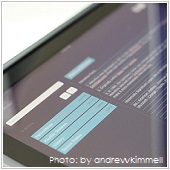Bring Your Own Device To Work: Excellent Money-Saving Idea Or Security Disaster Waiting To Happen?

 Maybe you’ve heard the term “BYOB” (bring your own bottle) when you were invited to a party with some friends. Now a similar trend is happening in business called “BYOD” (bring your own device) where employees are bringing their smartphones, tablets and other devices to work.
Maybe you’ve heard the term “BYOB” (bring your own bottle) when you were invited to a party with some friends. Now a similar trend is happening in business called “BYOD” (bring your own device) where employees are bringing their smartphones, tablets and other devices to work.
Considering the cost of new hardware, this trend seems pretty attractive for small business owners. Employees show up already equipped with the devices they need to work; you just give them a username and password and you’re off to the races without as many out-of-pocket expenses as before. Plus, the employees are more than happy because they get to continue to use their device of choice. Cool? Maybe…
Based on surveys and chatter online from IT managers and executives, how to effectively monitor and manage employee-owned devices is murky at best; in many cases, this “wild west” device strategy is causing IT departments to work overtime to keep their network secure and data out of the wrong hands. For example, IBM started allowing employees to BYOD back in 2010. Approximately 80,000 of their 400,000 employees started using non-company owned smartphones and tablets to access internal networks. But instead of IBM saving money, this situation actually increased costs in certain areas, namely in the management and security of those devices. Because of this, IBM has established guidelines on which apps the employees can or can’t use. In addition, employee-owned devices are configured so that they can be wiped remotely in case devices are stolen or misplaced prior to being granted access to internal networks. Cloud-based file-transfer programs such as iCloud, Dropbox and even Siri, the voice-activated personal assistant, are not allowed. Employees with greater access to internal applications and files will also have their smartphones equipped with additional software that performs the appropriate data encryption.
The bottom line is this: If you are going to allow employees to use their own personal devices to connect to your network, you need to make sure they aren’t a conduit for viruses, hackers and thieves; after all, we ARE talking about your clients’ and company’s data here! That means written policies need to be in place along with 24/7 monitoring of the device to ensure that security updates are in place to watch for criminal activity. We also urge you to establish a policy for all employees who bring mobile devices into the workplace about what they can and cannot do with their devices. They might already be using their smartphone or tablet to access e-mail or company files without you even knowing it, leaving you exposed.
For more information on how we can monitor and manage ALL the devices connected to your network, give us a call: (410) 884-0225.